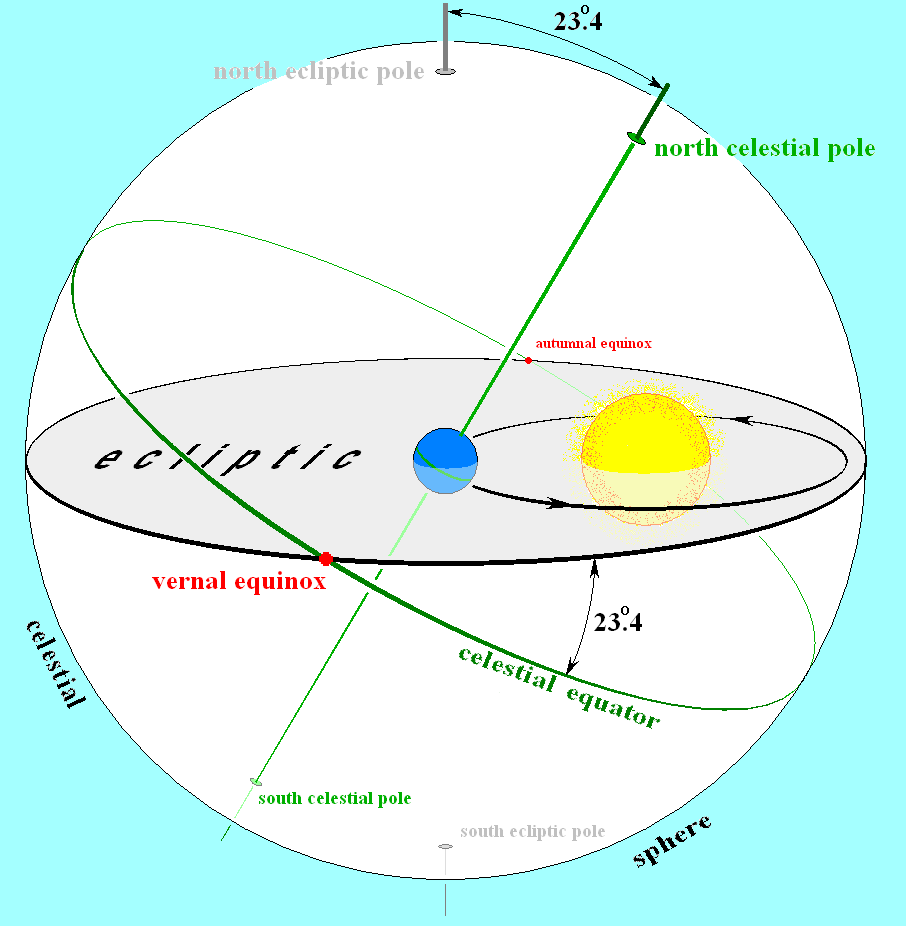
The plane of Earth’s orbit projected in all directions forms the reference plane known as the ecliptic. Here, it is shown projected outward (gray) to the celestial sphere, along with Earth’s equator and polar axis(green). The plane of the ecliptic intersects the celestial sphere along a great circle (black), the same circle on which the Sun seems to move as Earth orbits it. The intersections of the ecliptic and the equator on the celestial sphere are the vernal and autumnal equinoxes(red), where the Sun seems to cross the celestial equator.
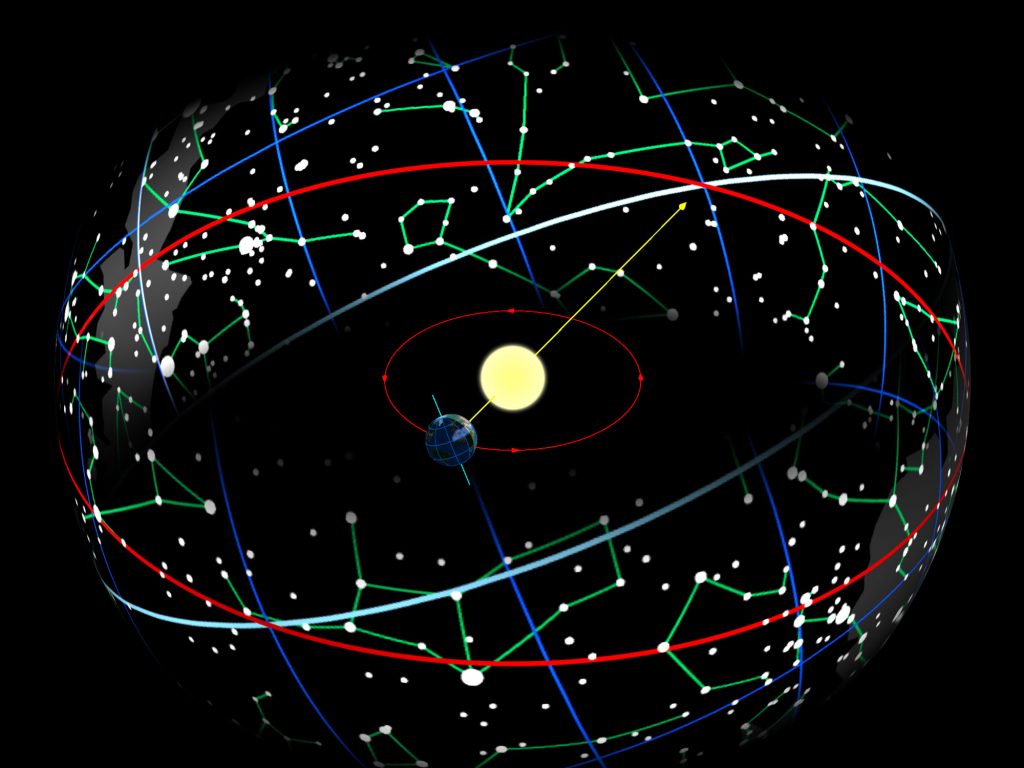
The Earth in its orbit around the Sun causes the Sun to appear on the celestial sphere moving along the ecliptic (red), which is tilted 23.44° with respect to the celestial equator (blue-white)
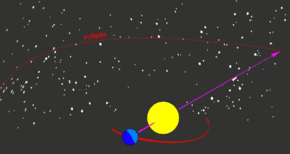
As seen from the orbiting Earth, the Sun, appears to move with respect to the fixed stars, and the ecliptic is the yearly path the Sun follows on the celestial sphere. This process repeats itself in a cycle lasting a little over 365 days.
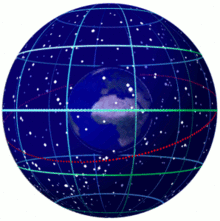
Earth rotating within a relatively small-radius geocentric celestial sphere. Shown here are stars (white), the ecliptic (red, the circumscription of the Sun’s apparent annual track), and the lines of right ascension and circles of declination (cyan) of the equatorial coordinate system.

The twelve ecliptic signs. Each dot marks the start of a sign and they are separated by 30°. The intersection of the celestial equator and the ecliptic define the equinoctial points: First Point of Aries (![]() ) and First Point of Libra (
) and First Point of Libra (![]() ). The great circle containing the celestial poles and the ecliptic poles (P and P’), intersect the ecliptic at 0° Cancer (
). The great circle containing the celestial poles and the ecliptic poles (P and P’), intersect the ecliptic at 0° Cancer (![]() ) and 0° Capricorn (
) and 0° Capricorn (![]() ). In this illustration, the Sun is schematically positioned at the start of Aquarius (
). In this illustration, the Sun is schematically positioned at the start of Aquarius (![]() ).
).

|
Aries |
The Ram |
|
Taurus |
The Bull |
|
Gemini |
The Twins |
|
Cancer |
The Crab |
|
Leo |
The Lion |
|
Virgo |
The Maiden |
|
Libra |
The Scales |
|
Scorpio |
The Scorpion |
|
Sagittarius |
The Archer (Centaur) |
|
Capricorn |
The Goat |
|
Aquarius |
The Water-bearer |
|
Pisces |
The Fish |
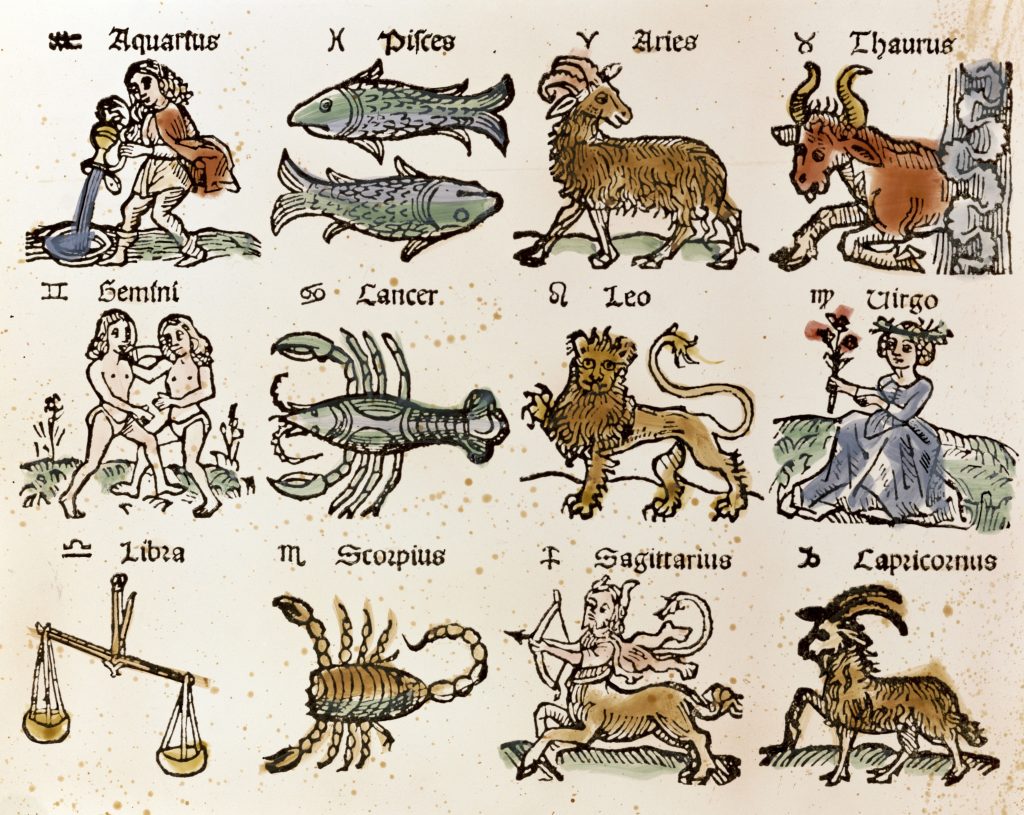
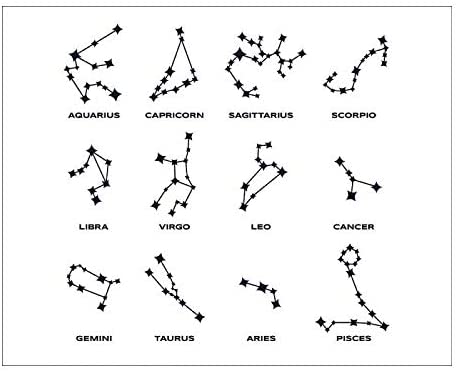
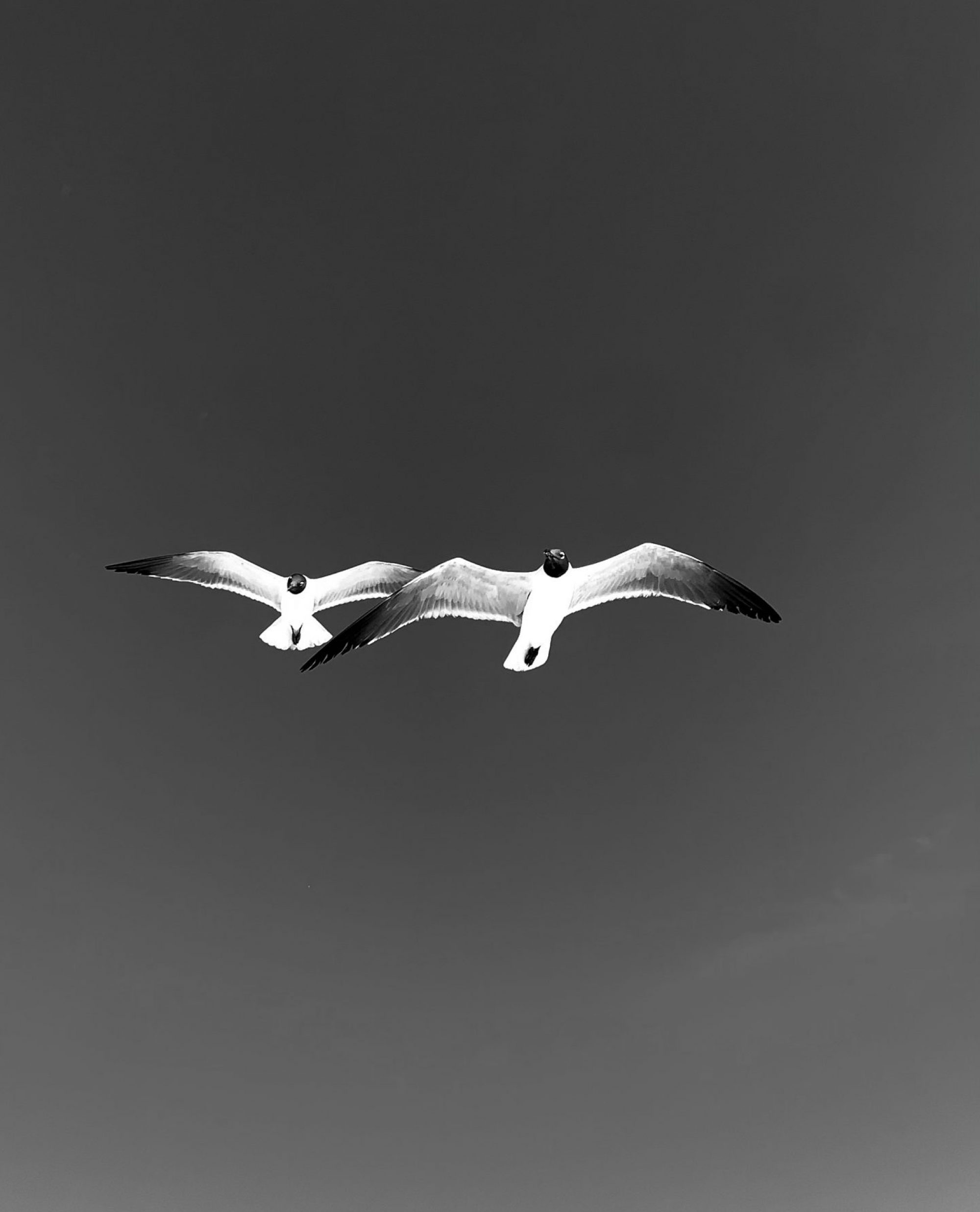
One Reply to “zōidiakòs kýklos (cycle of little animals)”